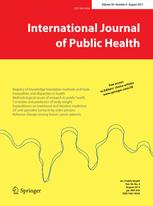Objectives
To examine the socioeconomic gradients in birth outcomes among singleton infants in Argentina, 2003’2007.
Methods
We analyzed data of 3,230,031 singleton infants born in 2003’2007, obtained from vital statistics. Associations between birth outcomes [small for gestational age (SGA), low birth weight (LBW), and preterm birth (PTB)] and socioeconomic indicators (maternal education and area-based material deprivation quintiles) were assessed with logistic regression.
Results
The risk of SGA increased with higher socioeconomic disadvantage, but that of PTB decreased. Compared to mothers who attained a tertiary or university degree, mothers who did not complete primary school were more likely to have a SGA infant [adjusted OR (95 % CI): 1.65 (1.62, 1.68)], but less likely to deliver preterm [0.92 (0.90, 0.94)]. As a result of the conflicting trends in SGA and PTB, LBW exhibited inconsistent socioeconomic gradients.
Conclusions
The excess risk of adverse birth outcomes associated with socioeconomic disadvantage was consistently reflected by SGA, but not by LBW and PTB. These findings challenge the usefulness of LBW as an indicator population health. Further research is needed to explain the reverse socioeconomic gradients in PTB.




